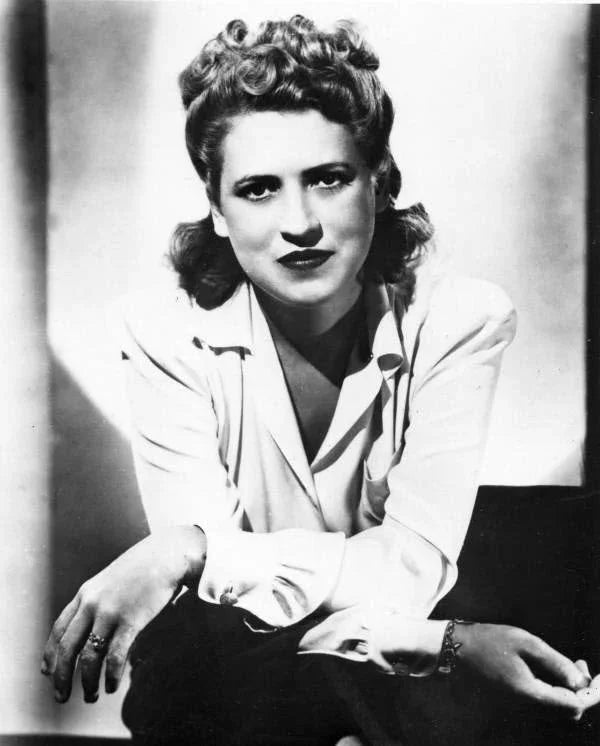Anna Leska
One of the things I find most interesting is that from the time the Wright Brothers first flew the Wright Flyer through the end of World War II many women pursued learning to fly.
From when I first learned to fly in February 1961 through my flight instructing and professional flying years which ended in 1977, I rarely met any female pilots, and although I instructed a number of women almost all of them quit flying shortly after soloing.
I find these early Aviatrix fascinating, and what they achieved was nothing short of amazing!
Today we meet another of these incredible women pilots.
Anna Leska
Anna Leska was born on November 14, 1910 Maria Marta and Julius Stanislaw Natanson-Leski in Poland.
Her father was an engineer and a pioneer of Poland's arms industry, and her younger brother was a Colonel Pilot by the name of Kazimierz Leski who was an intelligence officer in the Polish Home Army with the codename "Bradl".
Anna Leska passed her matriculation exam in 1927 in Warsaw, Poland.
Anna Leska became interested in flying from a young age, and at the age of 18 she began training to pilot gliders, hot air balloons and airplanes at the Warsaw Aeroclub. She soon became qualified in two categories of gliders, as well as a license to fly a hot air balloon.
From 1938 on she began flying a two-seat R.W.D. 8 training aircraft at the Warsaw Aeroclub.

An R.W.D. 8 training aircraft like the one Anna learned to fly in.
In September of 1939 Anna was called up to serve in the auxiliary military service as a Second Lieutenant and assigned to the Headquarters Squadron of the Air Command. She was stationed in Powsin and Pole Mokotowskie.
As the Germans headed towards Poland Anna managed to escape in an R.W.D. 13 aircraft from a German controlled airport in Okecie on September 22, 1939.
The Polish aircraft were hidden in the surrounding forests to protect the fleet from attack and had been camouflaged between the trees.
Pilots were instructed to move the planes out of the forest between air raids, and take off rapidly without waiting for the engine to warm up.
Anna Leska later described her escape flight as "taking off from an undug potato field" in an air raid.
Air Transport Auxiliary
Leska made her way to the UK via Romania and France.
Anna then wanted to join the British Air Transport Auxiliary (ATA), but the ATA required 250 hours of solo time to become a pilot in the ATA.
The problem was Anna was a newly qualified pilot when she flew in the Polish September campaign against the Germans, but only had 30 hours in her logbook.
Not to be deterred, she simply lied and told the Brits she had about 250 hours of solo time!
Anna was admitted into the training program, and on January 1, 1941 she became a Pilot Third Officer in the ranks of the ATA after passing all of her training and exams.
She was the 28th woman accepted into the ATA, and the first of two Polish women to join the ATA.
Anna Becomes A Ferry Pilot
Anna was assigned upon completion of her training to ferry aircraft from factories and repair facilities to airfields where they were needed.
From January 6, 1941 through November 30, 1945, Anna become one of three Polish female pilots in the ATA.
During that time period she was promoted to Pilot First Office.
In 1943 she was promoted to a Flight Leader and was in charge of eight women pilots, five British, one Chilean, one Argentinian and one American.
During her career with the ATA she ferried 1,295 aircraft of 93 different types, including flying boats and 557 Supermarine Spitfires.

Anna Leska sitting in the cockpit of one of the 557 Spitfires she flew.
Post World War II
In 1947 Anna Leska married Captain Pilot Mieczyslaw Daab of 301 Squadron in Great Britain.
Her husband had been a pilot in 301st Bomber Squadron during the war, and on his fourth bombing mission was shot and wounded but managed to return to England.
On his eleventh mission he was shot down over France, was captured by the Germans, imprisoned in a POW camp, finally being released on January 1, 1945.
They remained in Great Britain until 1977 when they returned permanently to Poland.
On August 22, 1980 her husband passed away and was buried in an Evangelical cemetery in Warsaw.
On January 21, 1998, Anna Leska-Daab died and was buried at the Powazki Cemetery alongside her parents and siblings.

Grave marker of Anna Leska-Daab, her parents and siblings.
I hope you enjoyed this trip through some of the history of aviation. If you enjoyed this trip, and are new to this newsletter, sign up to receive your own weekly newsletter here: Subscribe here!
Until next time, keep your eyes safe and focused on what's ahead of you, Hersch!







Leave a comment
This site is protected by hCaptcha and the hCaptcha Privacy Policy and Terms of Service apply.